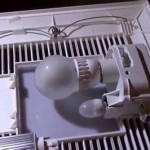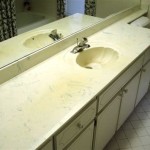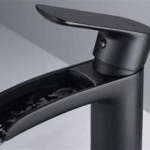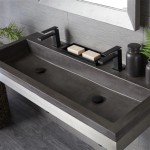Bathroom Sink Tap Connections
Bathroom sink tap connections are the crucial components that link the water supply to the faucet, enabling the flow of water for hand washing, brushing teeth, and various other bathroom tasks. Understanding these connections is essential for both homeowners and plumbers, as proper installation and maintenance ensure a reliable and leak-free water supply. This article delves into the different types of bathroom sink tap connections, their installation processes, and common issues that may arise.
Types of Bathroom Sink Tap Connections
Bathroom sink taps can be connected to the water supply using various methods, each with its advantages and disadvantages. The most common types of connections include:
- Compression Connections: These connections utilize compression nuts that tighten onto the pipe, compressing a rubber washer against the pipe's surface to create a watertight seal. Compression fittings are widely used for their simplicity and versatility, but they may require occasional tightening due to the gradual loosening of the compression nut over time.
- Push-Fit Connections: Also known as "push-to-connect" fittings, these connections feature a spring-loaded collar that creates a secure seal by pushing the pipe into the fitting. Push-fit connections are known for their speed and ease of installation, but they may not be suitable for all types of piping and may require special tools for removal.
- Soldered Connections: This method involves soldering the pipe directly to the faucet using a soldering iron and solder. Soldered connections are extremely durable and secure, but they require specialized tools and expertise for installation. They are also not as easily adjustable as other methods.
- Flexible Connectors: These connectors consist of braided stainless steel hoses with threaded ends that attach to the faucet and the water supply pipe. Flexible connectors provide flexibility and ease of installation, but they may be susceptible to leaks if damaged or improperly secured.
Installation Process for Bathroom Sink Tap Connections
The installation process for bathroom sink tap connections varies depending on the type of connection used. However, the general steps involved include:
- Turn off the water supply: Locate the main water shut-off valve for the bathroom and turn it off to prevent water from flowing while working on the connections.
- Prepare the pipes: If necessary, cut the pipes to the appropriate length and clean the ends to remove any debris or burrs.
- Connect the faucet: Thread the faucet onto the appropriate connection on the water supply pipe, ensuring the connection is tight and secure.
- Connect the water supply: Attach the water supply lines to the faucet and the water supply pipes, using the appropriate method for the type of connection.
- Turn on the water supply: Slowly turn on the water supply and check for any leaks. If there are leaks, tighten the connections or replace any damaged components.
- Test the faucet: Turn on the faucet and check for proper water flow and temperature.
Common Issues with Bathroom Sink Tap Connections
Various issues can arise with bathroom sink tap connections, leading to leaks, drips, or reduced water flow. Some common problems include:
- Loose Connections: Over time, connections can loosen due to vibration or movement, leading to leaks. Tightening the connections or replacing worn-out washers can resolve this issue.
- Damaged Fittings: Corrosion, wear, or improper installation can damage fittings, causing leaks or reduced water flow. Replacing damaged fittings is the best solution in such cases.
- Clogged Pipes: Debris or mineral buildup in the pipes can restrict water flow. Cleaning the pipes or replacing them if severely clogged can restore proper water flow.
- Faulty Valves: Worn-out or defective faucet valves can cause leaks or drips. Replacing the valves is usually the most effective solution.
It's important to note that these are just some of the common issues that may arise. If any problems persist, it's best to consult with a qualified plumber for diagnosis and repair.

What Are The Parts Of A Tap Fitting Wonkee Donkee Tools

Step By Guide Installing A Basin Mixer For Modern And Functional Bathroom Upgrade

Gardena Tap Connector For Indoor Taps Stubbings Nursery A Local Haven Garden And Gatherings
Flexible Silicone Sink Extender Drain Pipe Connector Extension Hose Faucet 50 Cm

Swivel Quick Connection Faucet Adapter Kit For Bathroom Kitchen To Garden Hose Brass Polished Chrome Com

Switch Faucet Adapter Kitchen Sink Splitter Diverter Valve Water Tap Connector For Toilet Bidet Shower Fruugo No

How To Install Wall Mounted Basin Faucet 2 Hole Mount Bathroom Sink Tap Installation Guide

Ultratap 1080 Draaiende Universele Kraan Opzetst Faucet Extender Aerator

Plumbing Heating Doctors
1 4 Ro Tube Quick Connector For Bathroom Sink Pt Aerator Q
Related Posts







